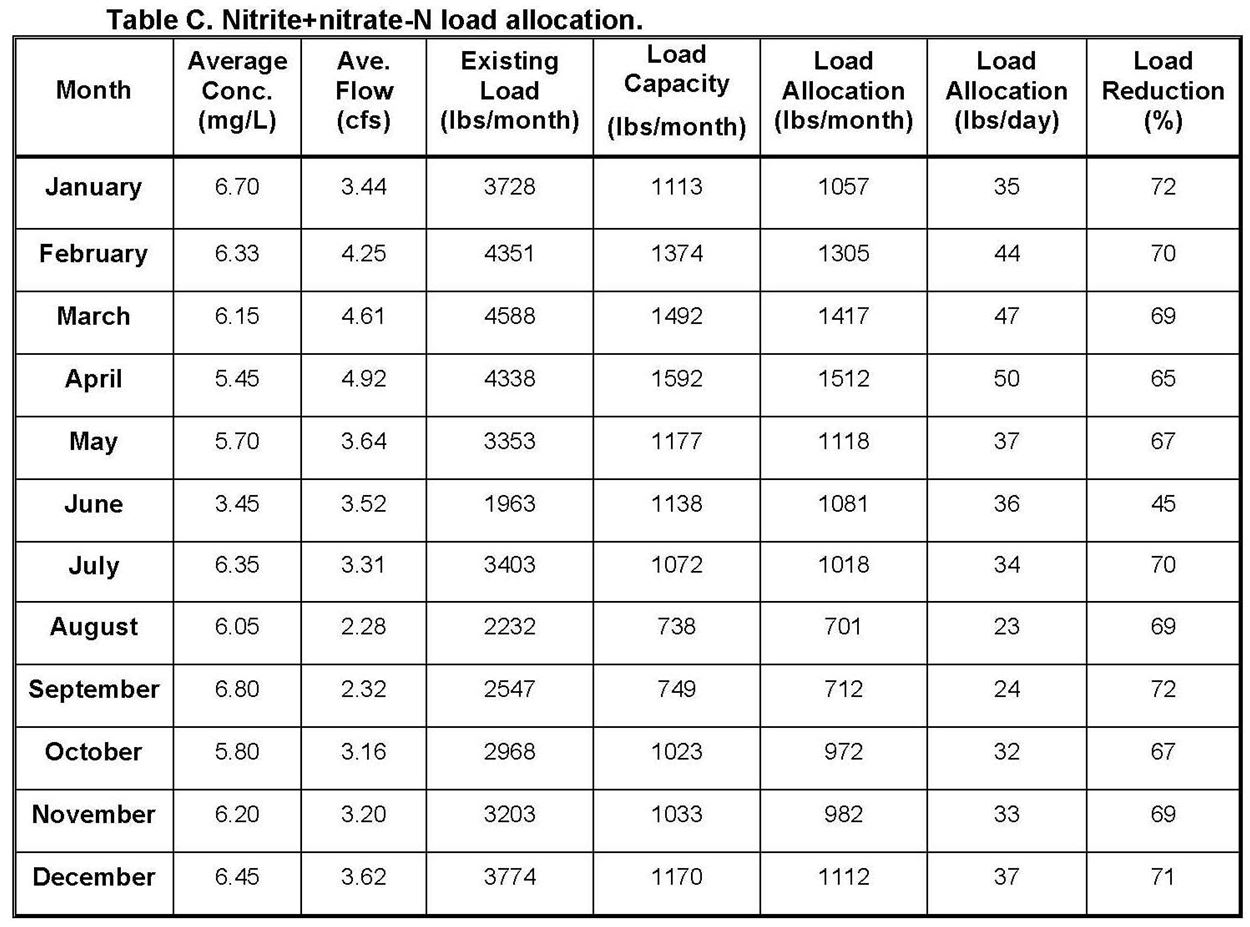E. coli Bacteria
Forty-one percent of the E. coli bacteria samples collected during the 2001-2002 monitoring season were measured and found to be above Idaho’s water quality criterion. Water quality monitoring conducted in 2005 showed E. coli bacteria in Lindsay Creek were above Idaho’s water quality standard, as well.
Consequently, E. coli bacteria levels in the stream need reduced by 66% (Table B).

Sediment
The effects of sediment on the most sensitive designated beneficial use in the Lindsay Creek watershed, aquatic life, are dependent on concentration and duration of exposure.
A sediment TMDL has been developed to maintain protection of existing fish populations and restore habitat conditions in the watershed. The sediment TMDL allocates approximately 79% of the load capacity to nonpoint sources and provides a 3% waste load allocation (based on the available load capacity) for potential inclusion into the city of Lewiston’s future MS4 NPDES permit. A Lewiston MS4 Storm Water waste load allocation of 3% and reserve for growth of 8% was estimated using the percent of land area in the watershed with current storm water drainage systems, and the land area currently lacking significant drainage systems which may evolve in the future.
Allowable daily loads were exceeded in January (77% reduction needed), February (20% reduction needed), and May (44% reduction needed). Sediment loads will need to be reduced during these critical time periods.
Nutrient
Elevated nutrient levels in Lindsay Creek appear to originate within the watershed and from ground water springs entering the watershed. Nitrogen concentrations in the groundwater indicate impacts are occurring to ground water quality, causing nitrogen concentrations to exceed the ground water management action threshold.
Accordingly, a nutrient TMDL (Table C) was developed to initiate protective ground water quality management actions, reduce nitrogen loading to the creek, and address the effects of excessive nutrient levels on cold water aquatic life in the creek. In agricultural areas, the application of fertilizers to crops can be a source of nutrient loading to water by percolation through the soil or from runoff. Soil reaching the creek can add both phosphorous and nitrogen to the stream. Manure from pets, wildlife, and livestock can contribute nutrients to the creek as well.

Stream Temperature
Stream temperatures exceed state water quality standards for spring and fall salmonid spawning 95% of the time. High temperatures limit the fish and other aquatic organisms biological activities.
On average, water temperatures need to be reduced by 3° C from June through September.